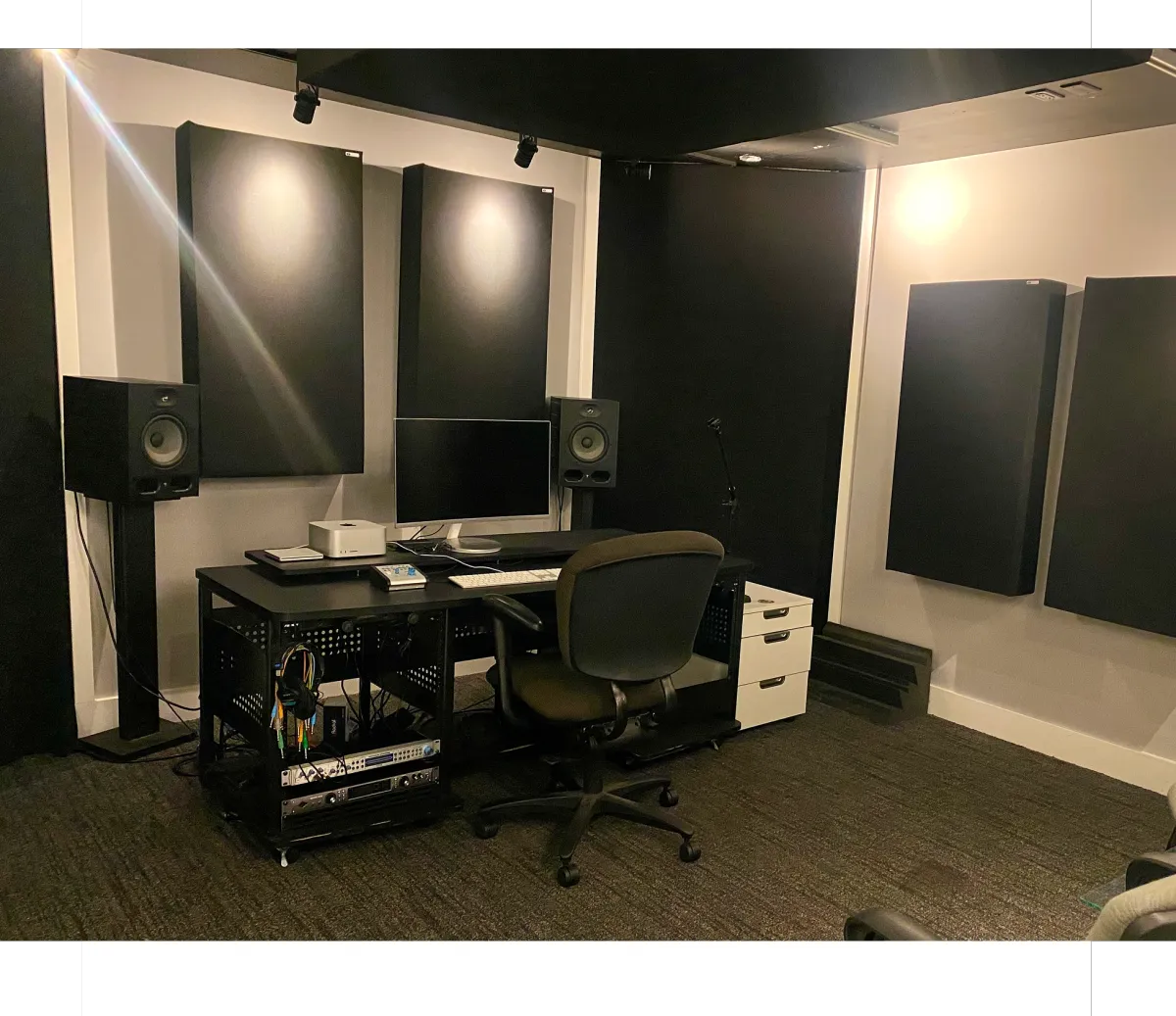
Film

Audio

Unique Events
Film Production — 2000 sq. ft. Soundstage
🎥 A Soundstage Built for Big Ideas
Bring your vision to life on our 2,000 sq. ft. fully soundproofed Soundstage, featuring green and white infinity walls and a flexible layout for filmmakers, commercial shoots, and music videos.
Key Features:
Spacious, professional-grade soundproofed Soundstage in the heart of SLC
Green and white cyc walls for dynamic production
Ideal for films, commercials, music videos, professional presentations, product demos, trade show exhibits, branded content, green screen shoots, livestream events, interviews, and more

Audio Recording — Professional Soundproofed Studios

🎙️ Record Like a Pro in Our Audio Studios
Whether you're a podcaster, musician, or voice-over artist, our soundproofed audio suite provides the perfect space to capture high-quality sound.
Key Features:
Soundproofed audio suite consists of a recording room and separate control room, where our audio engineer will take you to the next level of professionalism
Ideal for podcasts, music production, voice-over work, audiobooks, narration, ADR, vocal tracking, sound design, and more
Professional equipment and acoustics for crystal-clear recordings
Unique Events — The Creative Venue You’ve Been Looking For
A Studio Space with Room for Creative Gatherings
While our soundstage is purpose-built for film and audio production, it also doubles as a unique venue for small-scale events with a professional edge.
Key Features:
Ideal for: Industry mixers, live recordings, panel discussions, film screenings, workshops, and creative meetups
Black-box configurable soundstage with optional white or green cyc walls
Select seating available for flexible, modular setups
Green room and kitchen access included
Projector available upon request

Contact Form
Where Creativity and Execution Converge
















